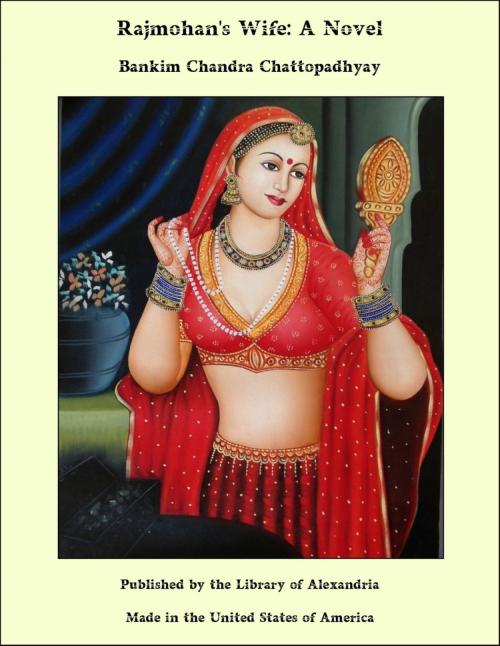Rajmohan's Wife: A Novel
Nonfiction, Religion & Spirituality, New Age, History, Fiction & Literature| Author: | Bankim Chandra Chattopadhyay | ISBN: | 9781465615398 |
| Publisher: | Library of Alexandria | Publication: | March 8, 2015 |
| Imprint: | Language: | English |
| Author: | Bankim Chandra Chattopadhyay |
| ISBN: | 9781465615398 |
| Publisher: | Library of Alexandria |
| Publication: | March 8, 2015 |
| Imprint: | |
| Language: | English |
THERE is a small village on the river Madhumati. On account of its being the residence of wealthy zemindars it is regarded as a village of importance. One Chaitra afternoon the summer heat was gradually abating with the weakening of the once keen rays of the sun; a gentle breeze was blowing; it began to dry the perspiring brow of the peasant in the field and play with the moist locks of village women just risen from their siesta. It was after such a siesta that a woman of about thirty was engaged in her toilet in a humble thatched cottage. She took very little time to finish the process usually so elaborate with womankind; a dish of water, a tin-framed looking-glass three inches wide, and a comb matching it sufficed for the task. Then, a little vermilion adorned her forehead. Last of all some betel leaves dyed her lips. Thus armed, a formidable champion of the world-conquering sex set out with a pitcher in her arm and pushing open the wattled gate of a neighbouring house entered within it. There were four huts in the house which she entered. They had mud floors and .bamboo walls. There was no sign of poverty anywhere, everything was neat and tidy. The four huts stood on the four sides of a quadrangle. Of these three had entrances opening on the yard, the fourth opened outwards. This last was die reception room, while the others, screened on all sides, constituted the zenana. Some brinjals and salads were growing on the carefully tilled plot of land in front of die raised terrace before the outer room. The whole was enclosed by a reed fence with a bamboo gate. So the woman could easily make her way into the house. It is superfluous to add that she went straight towards the zenana. I know not where the other inmates of the house had gone after their siesta, but at that time diere were only two persons there—one, a young woman of eighteen bent over her embroidery and a child of four immersed in play. His elder brother had wilfully left his ink-pot behind when going to school. The child's eyes had fallen on it, and he was joyfully smearing his face with die ink. He seemed to be afraid of his brother coming back and snatching the ink-pot away, and so he was emptying the pot. The newcomer sat down on the floor by the side of her who was working and asked, "What are you doing?"
THERE is a small village on the river Madhumati. On account of its being the residence of wealthy zemindars it is regarded as a village of importance. One Chaitra afternoon the summer heat was gradually abating with the weakening of the once keen rays of the sun; a gentle breeze was blowing; it began to dry the perspiring brow of the peasant in the field and play with the moist locks of village women just risen from their siesta. It was after such a siesta that a woman of about thirty was engaged in her toilet in a humble thatched cottage. She took very little time to finish the process usually so elaborate with womankind; a dish of water, a tin-framed looking-glass three inches wide, and a comb matching it sufficed for the task. Then, a little vermilion adorned her forehead. Last of all some betel leaves dyed her lips. Thus armed, a formidable champion of the world-conquering sex set out with a pitcher in her arm and pushing open the wattled gate of a neighbouring house entered within it. There were four huts in the house which she entered. They had mud floors and .bamboo walls. There was no sign of poverty anywhere, everything was neat and tidy. The four huts stood on the four sides of a quadrangle. Of these three had entrances opening on the yard, the fourth opened outwards. This last was die reception room, while the others, screened on all sides, constituted the zenana. Some brinjals and salads were growing on the carefully tilled plot of land in front of die raised terrace before the outer room. The whole was enclosed by a reed fence with a bamboo gate. So the woman could easily make her way into the house. It is superfluous to add that she went straight towards the zenana. I know not where the other inmates of the house had gone after their siesta, but at that time diere were only two persons there—one, a young woman of eighteen bent over her embroidery and a child of four immersed in play. His elder brother had wilfully left his ink-pot behind when going to school. The child's eyes had fallen on it, and he was joyfully smearing his face with die ink. He seemed to be afraid of his brother coming back and snatching the ink-pot away, and so he was emptying the pot. The newcomer sat down on the floor by the side of her who was working and asked, "What are you doing?"















